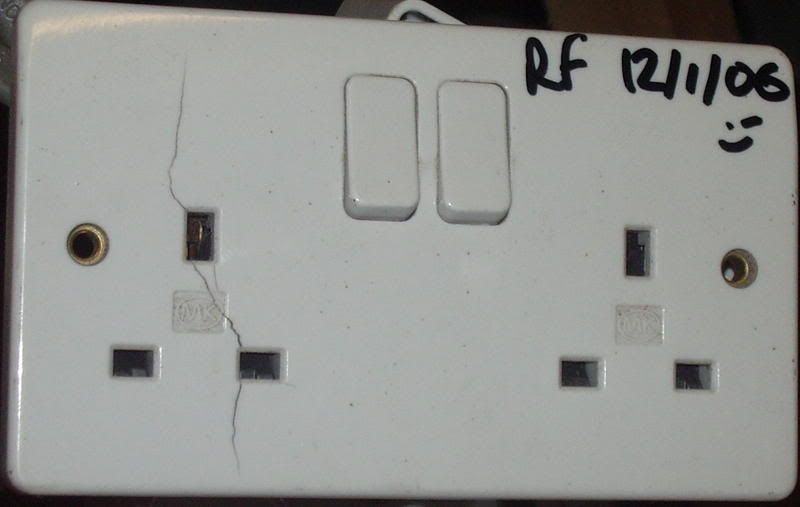- Joined
- 28 Oct 2005
- Messages
- 31,281
- Reaction score
- 1,997
- Country

dingbat said:joe-90, you appear to be a bit of a cock.
But right all the same.

dingbat said:joe-90, you appear to be a bit of a cock.
joe-90 said:Oh dear, getting all hot and bothered are we? Take a 13 amp fuse and crack it open. Take a look at the thickness of the wire.
Crack open a socket and look at the bus-bar.
Which of those will handle the heavier current?
joe-90 said:securespark said:Sockets can be subject to current in excess of 13A, right?
How? 13 amp fuse is the maximum allowed isn't it?
MK said:All MK socket-outlets are manufactured to comply with BS1363 part 2: 1995 and are rated at 13A per unit. Double socket-outlets have been manufactured and tested to exceed this rating by margin that allows electrical safety and reduces the risk of heat and mechanical damage to components due to overloading. It should be noted that BS1363 part 2: 1995 does not allow double sockets to operate at twice the permissable maximum loading and it should be remembered that double socket-outlets are not manufactured to be able to withstand a 26A load for sustained periods of time.
Research by ourselves and third party organisations has shown that all MK double sockets can safely withstand a continuous load of 19.5A for an indefinite period. Increasing the load slightly will begin to cause heat and mechanical stresses on the components in a relatively short period. Testing showed that a load of 22.3A was sufficient to cause heat stress that would cause a browning of the faceplates and sufficient heat to cause insulation damage to cable cores. A load of 24A for 43 hours was sufficient to cause significant heat damage to the material in which the socket-oulet was situated and within 75 hours sufficient to cause significant damage that would lead to the very real potential of fire.
MK recommend that users of their sockets consult professional design Engineers when designing installations to avoid the possibility of heat and mechanical stress to components and installations caused by overloading of MK socket-outlets


Ejaz said:lads, lads c'mon! leave a few leccies alone and look what happens!!
getting back to my last post:
wow thanks for the quick response! yep the 20A radial is wired in 2.5T+E. So my initial thoughts are to run the cooker (runs off 13amp socket) and the fridge/freezer of the ring main with one double socket above counter.
Then run the washing machine and 3 additional double sockets of the 20A radial, does that sound reasonable?
Not sure about RCD for the fridge/freezer will have to think about that one.
I did have a brief read of the "Electricians Guide to Part P" it's the small green guide that was helpful, might get a copy.
Forgot about the cooker hood, i'll supply that off the ring main also.

joe-90 said:securespark said:Sockets can be subject to current in excess of 13A, right?
How? 13 amp fuse is the maximum allowed isn't it?

bernardgreen said:joe-90 said:Oh dear, getting all hot and bothered are we? Take a 13 amp fuse and crack it open. Take a look at the thickness of the wire.
Crack open a socket and look at the bus-bar.
Which of those will handle the heavier current?
And then look at the cross section of the areas of contact between the metal of the pin and the metal of the sprung contact in the socket.
THAT is the main limiting factor as there is a contact resistance there which generates a bit of heat.

bernardgreen said:joe-90 said:securespark said:Sockets can be subject to current in excess of 13A, right?
How? 13 amp fuse is the maximum allowed isn't it?
Yes, and the back of a double socket says MAX 13 amp for the imcoming cables so that means 13 amps shared between the two sockets.
In the 1970s the GPO (the phone company before BT) derated all "13" amp plugs down to 9 amps maximum for safety reasons. Only one brand was permitted to be used for the rare occasions when more than 2 kilowatt was needed.
If you need to find a tradesperson to get your job done, please try our local search below, or if you are doing it yourself you can find suppliers local to you.
Select the supplier or trade you require, enter your location to begin your search.
Are you a trade or supplier? You can create your listing free at DIYnot Local
